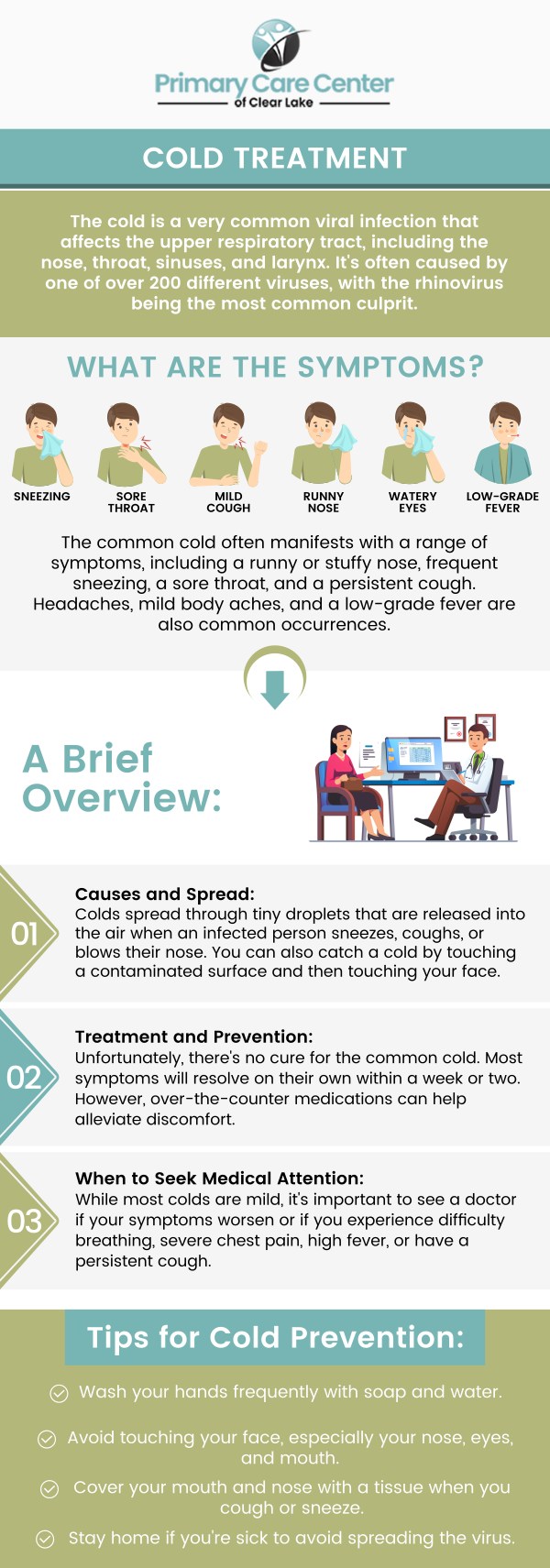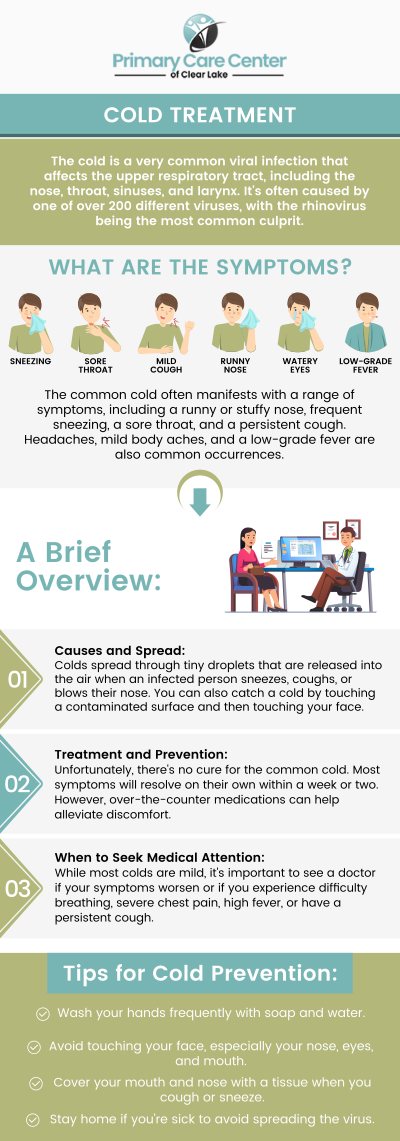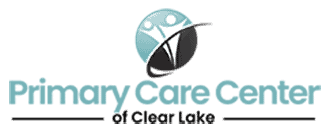Does Blowing Your Nose Make Cold Symptoms Worse?
Primary Care Center of Clear Lake offers personalized care to help manage cold symptoms and promote a faster recovery. From easing congestion and runny noses to addressing coughs and sore throats, Dr. Smriti Choudhary, MD, and her compassionate team provide professional guidance and treatments tailored to your needs. Visit us today for compassionate care and relief! For more information, please contact us or schedule an appointment online. We have convenient locations to serve you in Webster and Pasadena, TX.




Table of Contents:
Does blowing your nose make it more stuffy?
Does cold air make a stuffy nose worse?
Is it better to let your nose run when you have a cold?
Is it good to remove mucus from the nose during a cold?
Blowing Your Nose: Effects on Nasal Congestion
• Understanding Nasal Congestion
Nasal congestion results from inflamed blood vessels in the nasal passages, often due to colds, sinus infections, or allergens. This inflammation leads to mucus buildup as the body works to trap and remove irritants.
• The Impact of Nose Blowing
Blowing your nose can offer temporary relief by clearing mucus but doesn’t address the underlying cause. However, forceful blowing may push mucus into the sinuses, increasing the risk of infection. Frequent, aggressive nose blowing can irritate nasal membranes, causing more swelling and mucus production.
• Recommended Strategies for Patients:
• Gentle Technique: Blow gently, one nostril at a time, to avoid irritation.
• Saline Irrigation: Use sprays or irrigators to flush nasal passages and reduce inflammation.
• Decongestants: OTC decongestants can help, but follow directions carefully.
• Stay Hydrated: Fluids help thin mucus for easier expulsion.
• Moisturize the Air: Use a humidifier or steam to keep nasal passages moist.
• Sleep Position: Elevate your head to improve airflow.
At the Primary Care Center of Clear Lake, we focus on your well-being. For ongoing concerns, schedule a consultation for tailored care.
When patients are exposed to cold air, the initial response might be the constriction of blood vessels in the nasal passages, which can temporarily reduce swelling. However, this is often followed by dilation, increasing blood flow to the nasal tissues and potentially leading to congestion. The dryness of cold air can further irritate the nasal passages, as moisture is essential for the optimal function of mucous membranes. In response, the body may produce more mucus to humidify the incoming air, sometimes worsening the sensation of congestion.
Interestingly, cold air might offer relief for some by promoting drainage and reducing inflammation. Dryness can absorb excess moisture, improving airflow, while cold temperature can numb nerve endings and reduce the perception of congestion.
Patients with conditions like asthma or COPD may experience increased discomfort in cold air due to airway sensitivity. We recommend wearing a scarf or face covering to warm inhaled air, maintaining adequate humidity indoors, and using saline sprays to mitigate the effects of dry, cold air.
At the Primary Care Center of Clear Lake, we emphasize the importance of individualized care. Our team is dedicated to helping patients understand how cold air affects their nasal congestion and providing tailored solutions to manage symptoms effectively.
At the Primary Care Center of Clear Lake, we aim to help you manage runny nose symptoms effectively during a cold. Understanding when to let your nose run and when to blow it gently can make a significant difference in your comfort and recovery.
Benefits of Letting Your Nose Run
A runny nose is a natural defense mechanism, flushing out viruses and irritants while moisturizing nasal passages. Mucus traps pathogens and soothes irritation, aiding in recovery. However, persistent dripping can cause facial irritation, congestion, and excessive mucus production.
Advantages of Blowing Your Nose
Gentle nose blowing helps clear blockages, reduces facial irritation, and prevents mucus buildup. However, aggressive blowing risks tissue damage, infection spread, and increased mucus production.
Balanced Approach for Relief:
• Let your nose run when congestion is mild.
• Blow gently to clear excessive mucus.
• Use saline sprays to maintain moisture.
• Stay hydrated and use a humidifier to ease breathing.
• Avoid aggressive blowing and overuse of medications.
For persistent or worsening symptoms, consult our healthcare team for personalized care and potential underlying causes.
At the Primary Care Center of Clear Lake, we understand how bothersome nasal congestion can be during a cold. Patients often wonder if removing mucus from the nose is beneficial. Our team of healthcare professionals is here to guide how to manage mucus while supporting your body’s natural defense mechanisms.
• The Role of Nasal Mucus
Mucus plays a vital role in protecting your respiratory system during a cold:
• Pathogen Defense: It acts as a barrier, trapping viruses and bacteria as they attempt to enter your body.
• Immune Support: Mucus contains antibodies and enzymes that help neutralize harmful germs.
• Moisture Maintenance: Keeping nasal passages moist, mucus prevents dryness and irritation.
• Breathing Aid: By lubricating nasal passages, mucus facilitates easier breathing.
• Considerations for Mucus Removal
While it may be tempting to clear away mucus for immediate relief, it’s important to do so thoughtfully:
• Immune Function: Aggressive removal can strip away protective barriers, potentially weakening your immune response.
• Irritation Risks: Over-removal can lead to increased inflammation and discomfort in the nasal passages.
• Nosebleeds: Vigorous nose blowing may damage delicate blood vessels, causing nosebleeds.
• Safe Practices for Mucus Management
Our team recommends the following strategies for managing mucus without compromising your health:
• Saline Nasal Sprays: Use these to gently loosen mucus, making it easier to expel.
• Steam Therapy: Inhaling steam can help thin mucus, easing its removal.
• Gentle Blowing: Blow your nose carefully, one nostril at a time, to avoid pushing mucus back into the sinuses.
• Hydration: Drink plenty of fluids to keep mucus from becoming thick and sticky.
• Humidifiers: Keep indoor air moist to prevent nasal dryness.
• Caution with Decongestants: Be wary of over-the-counter decongestants that might cause rebound congestion.
We advise balancing mucus removal with techniques that support your immune system. While mucus removal can offer relief from congestion, it’s essential to do so gently to maintain your natural defense mechanisms.
For personalized care and effective cold management strategies, feel free to reach out to our healthcare providers. We are here to ensure you maintain optimal health and comfort during the cold season. For more information, please contact us or schedule an appointment online. We are conveniently located at 13920 Osprey Ct, Suite C, Webster, TX 77598. We serve patients from Webster TX, Bacliff TX, Dickinson TX, Seabrook TX, League City TX, Clear Lake City TX, and surrounding areas.

Additional Services We Offer
• 2D ECHO
• ABI Testing
• Obesity Medicine
• Alzheimer’s Disease
• Anxiety Disorder
• Aortic Aneurysm Screening
• Arthritis
• Asthma
• Body Composition Testing
• Cancer Screening
• Carotid Doppler
• Chronic Condition Management
• Chronic Kidney Disease
• Chronic Obstructive Pulmonary Disease
• Congestive Heart Failure
• COPD & Asthma
• Coronary Heart Disease
• COVID-19 Testing
• Dementia Screening
• Depression
• Diabetes Management
• EKG
• Food Allergies
• Food Sensitivity
• Geriatric Care
• Hypertension
• Outdoor Allergies
• Parkinson’s Disease
• Primary Care
• Resting Metabolic Rate Testing
• Thyroid Scan
• Wellness Exams for Men
• Wellness Exams for Women
• Ozempic
• Integrative Medical Weight Loss
• Men’s Health
• Testosterone Replacement Therapy
• Erectile Dysfunction
• Testosterone Gel and Injections
• Women’s Health
• Menopause
• PCOS
• Hormone Replacement Therapy
• Individual Nutritional and Lifestyle Counselling
• Indoor Allergies
• Internal Medicine
• Lipid Disorders
• Medical Weight-Loss
• Osteoporosis

Additional Services We Offer
• 2D ECHO
• ABI Testing
• Obesity Medicine
• Alzheimer’s Disease
• Anxiety Disorder
• Aortic Aneurysm Screening
• Arthritis
• Asthma
• Body Composition Testing
• Cancer Screening
• Carotid Doppler
• Chronic Condition Management
• Chronic Kidney Disease
• Chronic Obstructive Pulmonary Disease
• Congestive Heart Failure
• COPD & Asthma
• Coronary Heart Disease
• COVID-19 Testing
• Dementia Screening
• Depression
• Diabetes Management
• EKG
• Food Allergies
• Food Sensitivity
• Geriatric Care
• Hypertension
• Outdoor Allergies
• Parkinson’s Disease
• Primary Care
• Resting Metabolic Rate Testing
• Thyroid Scan
• Wellness Exams for Men
• Wellness Exams for Women
• Ozempic
• Integrative Medical Weight Loss
• Men’s Health
• Testosterone Replacement Therapy
• Erectile Dysfunction
• Testosterone Gel and Injections
• Women’s Health
• Menopause
• PCOS
• Hormone Replacement Therapy
• Individual Nutritional and Lifestyle Counselling
• Indoor Allergies
• Internal Medicine
• Lipid Disorders
• Medical Weight-Loss
• Osteoporosis





